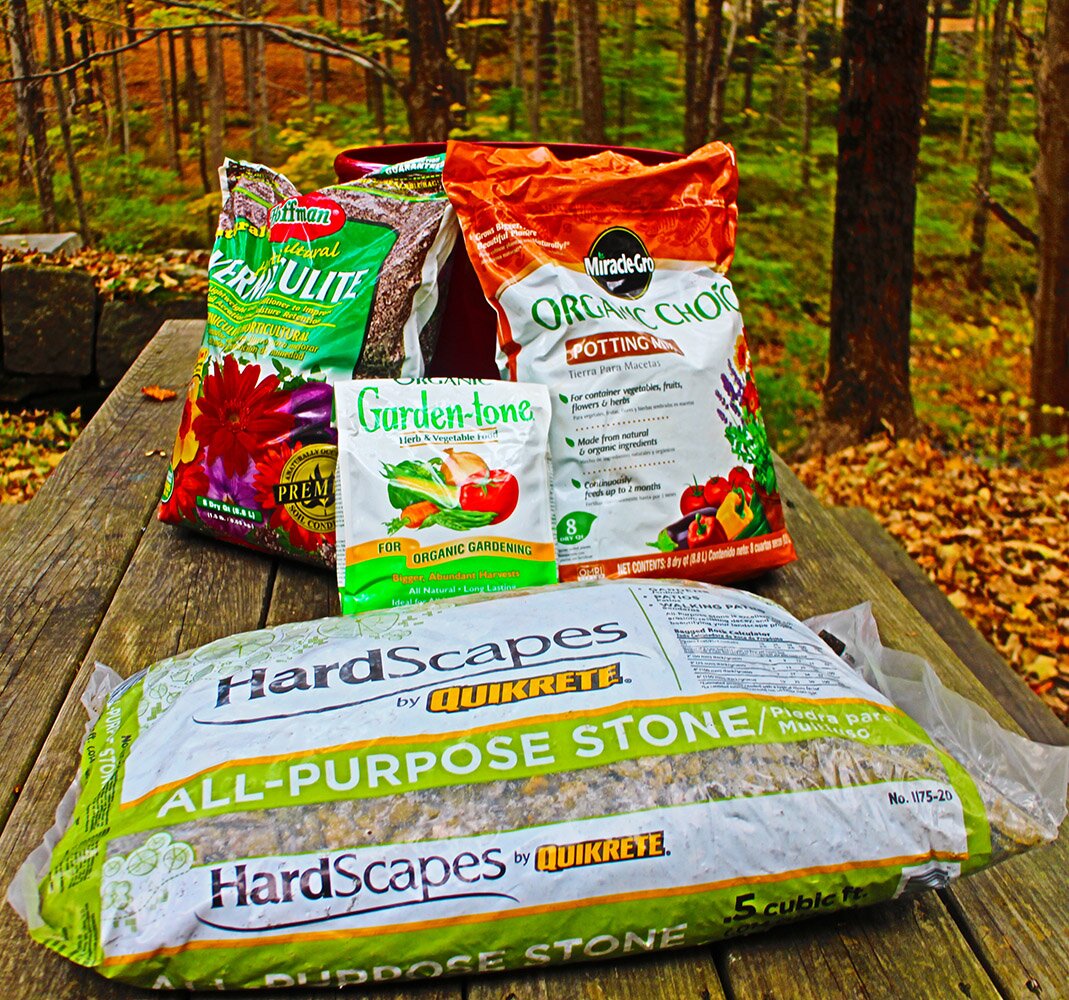Prep Your Plants for Winter in 3 Easy Steps
With winter coming, most annuals die away with the first frost. If you want to enjoy fresh herbs year round, try moving your plants indoors for the winter. Check out how we took our plants from ground to container garden in three easy steps! This is a great project that can be done over the weekend or in an afternoon!
Supplies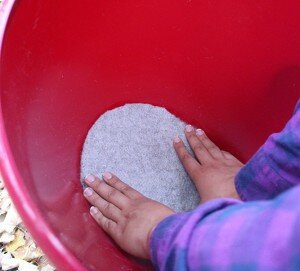
- Potting Mix
- Large Planter or Window Boxes
- Shovel
- Trowel
- Watering Can or Hose
- Gravel
- Superior Felt Rug Pad
- Plant Food/Fertilizer
- Gardening Gloves (optional)
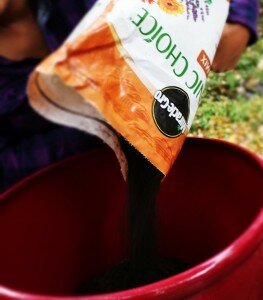 Step One: Picking Your Planter
Step One: Picking Your Planter
The key to making plants last through the winter is setting up the proper container environment where your plant will get proper moisture, drainage, and sunlight. If you are planning on bringing plants indoors for the winter, first make sure that you have a south-facing window with enough sunlight. Most plants need a minimum of 8 hours of sunlight per day to thrive indoors.
Once you have chosen a place in your house for the plants, choose the correct planter to fit your transplants. Any planter you choose should have holes on the bottom to allow water to drain out. Most herbs and salad greens can thrive in more shallow planters, so window boxes would be perfect for most herbs. If you are planting chives, cilantro, marjoram, oregano, parsley, sage, savory, tarragon, thyme, and chervil, make sure your planter is minimum 8 inches deep. If you are planting basil, lavender, rosemary, dill, or lemongrass, consider using a larger container that is minimum 16 inches deep and 12 inches wide. I chose to use a large container to transplant my parsley, sage, and basil.
Step Two: Preparing Your Planter
Once I determined which planter I would be using, I began to prep my planter for transplanting. First I cut a piece of our Superior Felt Rug Pad from scrap that we had, to place in the bottom of my planter. Made from all natural materials with no chemicals or additives, it will not harm my plants in any way and it will help the soil to retain moisture and keep my window box dry. Next, I poured in my gravel on top of the rug pad, this will help keep the rug pad in place on the bottom and help the soil to drain more easily, preventing the plants from being drowned. Your gravel should fill ¼ of the container. After you are done pouring your gravel, you can add your potting mix. Add your potting mix so it reaches ¾ of the way up the container. This will give your plants enough room for roots to grow downward. Once you have added your potting mixture it is time to add your plants.
 Step Three: Adding Your Plants
Step Three: Adding Your Plants
I transferred my plants from the ground into their new container, but you can also purchase new herbs from your local garden store. If you are transferring plants from the ground, make sure to use a large shovel and dig about 6-8 inches away from the base of the plant. Dig out each plant and then tap some of the soil off and add it to your container. Because I had a larger container, I was able to fit multiple plants in one container. If you are using a smaller container, try only planting one or two herbs, so the container does not get overcrowded. The sage, parsley, and basil from our garden had done well this summer so we chose to transplant those for our container garden. If you are using store bought herbs, remove the herbs from their containers and tease out some of the roots from their base. This encourages the roots to 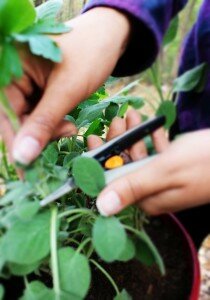 branch out and take hold in their container.
branch out and take hold in their container.
Once your plants are placed where you want them, it is time to fill in the rest of the container with more potting mix. Try to leave 1-2 inches of space on the top, so your planter does not overflow when being watered. If you have any particularly tall plants, now is the time to trim them. Trimming them back after planting will encourage them to grow outward and not up. Also check your plants for any dead or dying stalks – cut those back to encourage new growth to replace them!
Now that your plants are in their planter, it is time to water them! With transplants, you want to soak them when they are first planted and then just maintain moisture after that. Now that your plant has been watered you are all set to bring it indoors. Place in a windowsill to enjoy fresh herbs all winter long!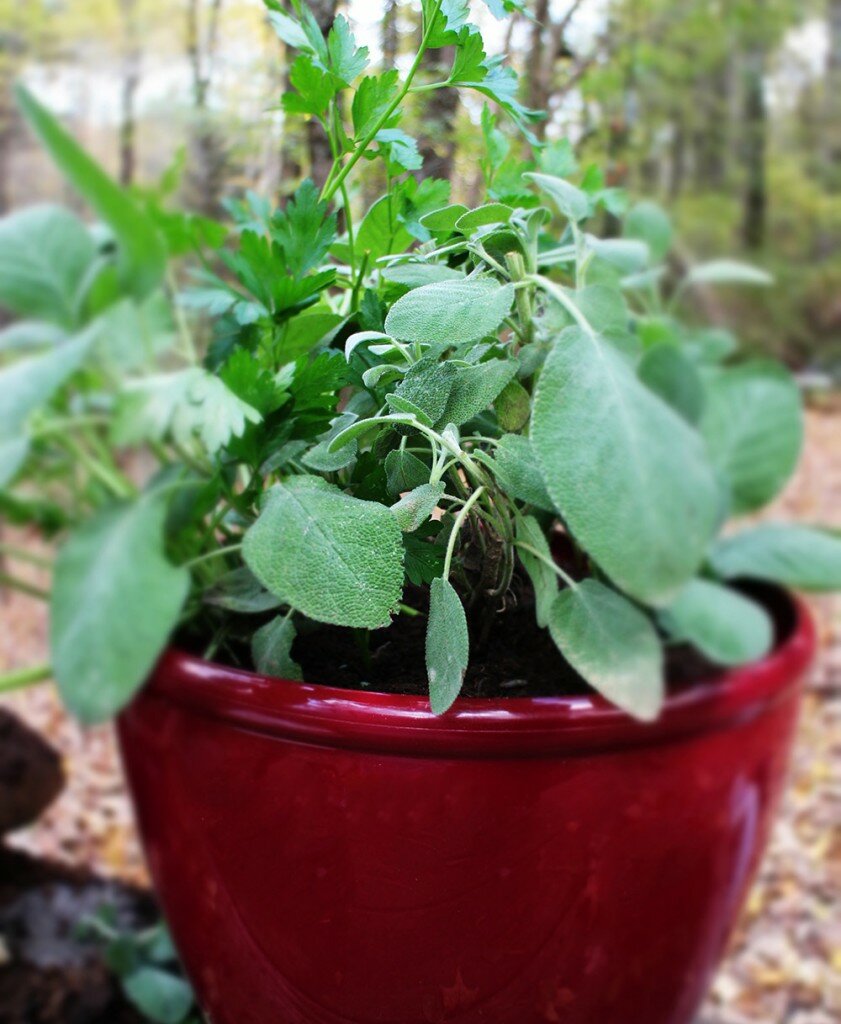



 INTERNATIONAL SHIPPING
INTERNATIONAL SHIPPING
